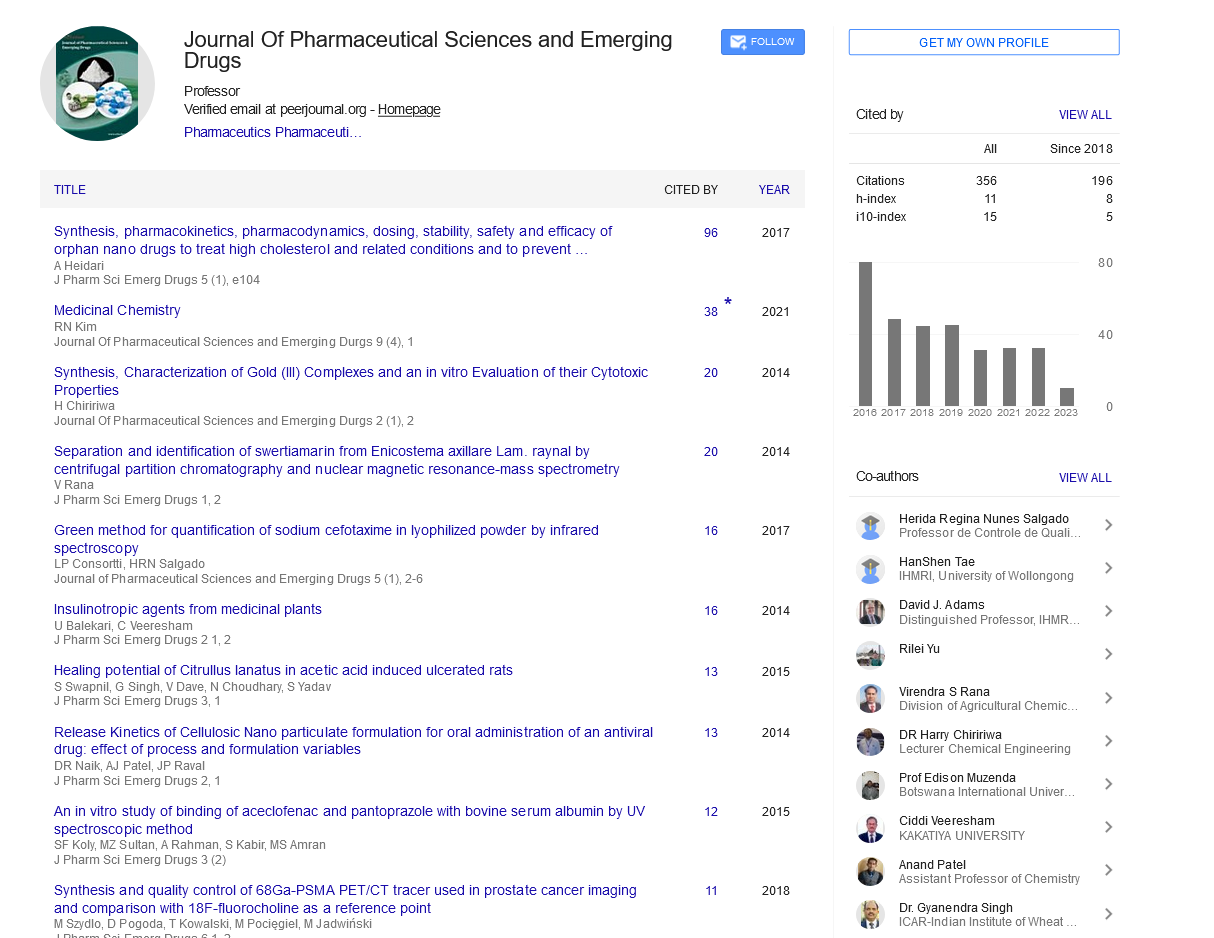Opinion Article, J Pharm Sci Emerg Drugs Vol: 12 Issue: 3
Analyzing the Complicated Mechanisms of Drug Interactions
Steve Antony*
1Department of Pharmacology, University of Texas Southwestern Medical Center, Dallas, United States of America
*Corresponding Author: Steve Antony,
Department of Pharmacology, University
of Texas Southwestern Medical Center, Dallas, United States of America
E-mail: steve@gmail.com
Received date: 22 May, 2024, Manuscript No. JPSED-24-148991;
Editor assigned date: 24 May, 2024, PreQC No. JPSED-24-148991 (PQ);
Reviewed date: 07 June, 2024, QC No. JPSED-24-148991;
Revised date: 14 June, 2024, Manuscript No. JPSED-24-148991 (R);
Published date: 21 June, 2024, DOI: 10.4172/2380-9477.1000188
Citation: Antony S (2024) Analyzing the Complicated Mechanisms of Drug Interactions. J Pharm Sci Emerg Drugs 12:3.
Abstract
Description
As polypharmacy becomes increasingly common particularly among the elderly and those with chronic conditions the need to understand drug interactions is more important than ever. Drug interactions can lead to adverse effects, reduced therapeutic efficacy and increased healthcare costs, making awareness and education essential for optimal patient care. Drug interactions occur when the effects of one drug are altered by the presence of another drug, food, beverage, or dietary supplement. These interactions can be categorized into three main types: Pharmacodynamics, pharmacokinetic and pharmaceutical interactions.
Pharmacodynamical interactions occur when two drugs have similar effects, leading to additive, synergistic, or antagonistic outcomes. For instance, combining two sedatives can amplify the effects, leading to excessive sedation, while pairing a stimulant with a sedative could diminish the effects of one or both drugs. Pharmacokinetic interactions involve changes in the absorption, distribution, metabolism, or excretion of a drug due to another substance. For example, certain foods, like grapefruit juice, can inhibit cytochrome P450 enzymes, affecting how drugs are metabolized in the liver. This interaction can lead to increased blood levels of a medication, resulting in toxicity.
Pharmaceutical interactions refer to incompatibilities that occur before a drug is administered, such as the physical or chemical reactions between drugs when mixed in a solution. The risks associated with drug interactions are heightened in individuals taking multiple medications. Polypharmacy, defined as the concurrent use of multiple medications, is prevalent among older adults, who often manage several chronic conditions. Studies show that polypharmacy increases the likelihood of Adverse Drug Reactions (ADRs), which can lead to hospitalizations, increased morbidity and even mortality.
Moreover, drug interactions are not solely limited to prescription medications; over-the-counter drugs, herbal supplements and food can also play a significant role in how medications work. For instance, certain dietary supplements can interfere with anticoagulants, leading to dangerous bleeding complications. To navigate the complexities of drug interactions, several strategies can be implemented: This process involves reviewing a patient’s complete medication list during healthcare transitions such as hospital admissions or discharges to identify and address potential drug interactions. Understanding genetic factors influencing drug metabolism can help predict how individuals will respond to specific medications, minimizing the risk of harmful interactions. Personalized medicine, based on genetic profiles, is an emerging field that aims to tailor drug therapy to individual needs.
Conclusion
Empowering patients with knowledge about their medications is essential. Healthcare providers should educate patients on the importance of disclosing all medications, including over the counter drugs and supplements, as well as any changes in their health status. Drug interaction databases and electronic health records can assist healthcare providers in identifying potential interactions. Decisionsupport tools can offer real time alerts when prescribing or dispensing medications. Navigating the complex world of drug interactions is an ongoing challenge in modern healthcare. As the use of multiple medications becomes more common, awareness and proactive management of drug interactions are essential to ensure patient safety and improve therapeutic outcomes. By using strategies such as medication reconciliation, embracing pharmacogenomics, providing patient education and utilizing technology, healthcare providers can reduce the risks associated with drug interactions. Ultimately, a comprehensive understanding of this intricate field is important for delivering effective, safe and personalized care in an increasingly complex medical environment.
 Spanish
Spanish  Chinese
Chinese  Russian
Russian  German
German  French
French  Japanese
Japanese  Portuguese
Portuguese  Hindi
Hindi 